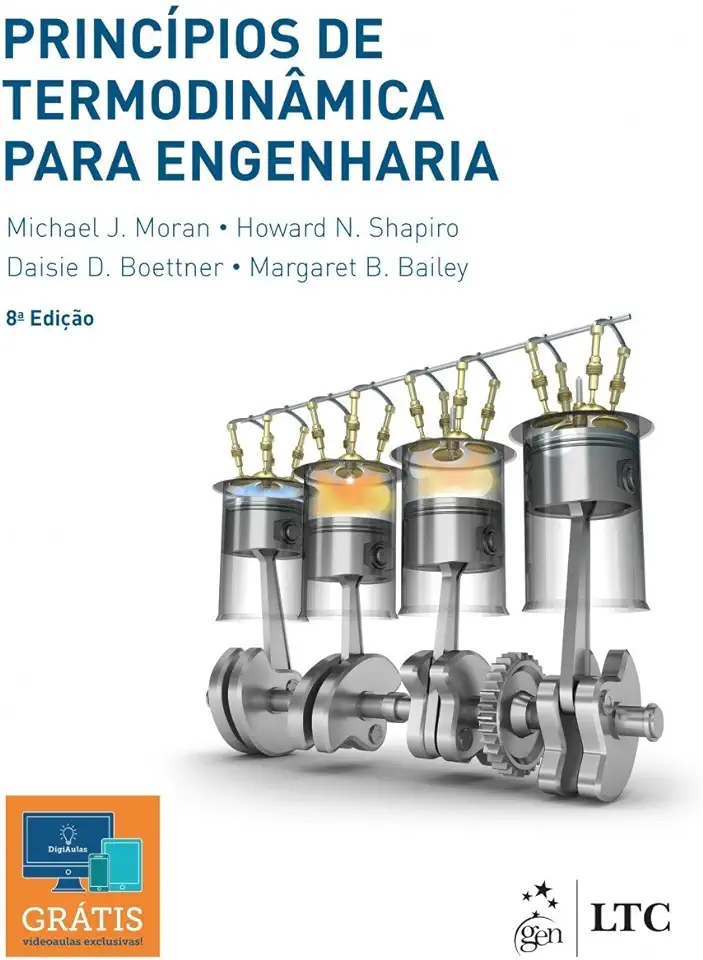
Principles of Engineering Thermodynamics - Michael J Moran
Principles of Engineering Thermodynamics: A Comprehensive Guide to the Fundamental Concepts
Introduction
In the realm of engineering, thermodynamics stands as a cornerstone discipline, providing the essential framework for understanding and analyzing energy transformations. Michael J. Moran's seminal work, "Principles of Engineering Thermodynamics," serves as a comprehensive and authoritative guide to this fundamental field, offering a thorough exploration of the concepts, principles, and applications that underpin the efficient utilization of energy in engineering systems.
Key Features:
Comprehensive Coverage: Moran's book provides an exhaustive treatment of thermodynamics, encompassing the fundamental laws, concepts, and applications that form the foundation of the discipline.
Clear and Engaging Presentation: The text is meticulously organized and presented in a clear and engaging manner, making complex concepts accessible and understandable even to readers with limited prior knowledge of thermodynamics.
Problem-Solving Approach: Throughout the book, Moran emphasizes the practical application of thermodynamic principles through numerous worked examples and end-of-chapter problems. This problem-solving approach reinforces understanding and equips readers with the skills necessary to tackle real-world engineering challenges.
Real-World Applications: The book is replete with real-world examples and case studies, illustrating the practical relevance of thermodynamics in diverse engineering fields, including power generation, refrigeration, propulsion, and environmental control.
Chapter Overview:
Chapter 1: Introduction and Basic Concepts:
- Provides an overview of thermodynamics and its significance in engineering.
- Introduces fundamental concepts such as energy, work, heat, and temperature.
Chapter 2: The First Law of Thermodynamics:
- Explores the concept of energy conservation and the first law of thermodynamics.
- Discusses energy transfer mechanisms and the application of the first law to various systems.
Chapter 3: Properties of Pure Substances:
- Introduces the concept of thermodynamic properties and their role in describing the state of a system.
- Presents equations of state and property tables for common substances.
Chapter 4: Processes and Cycles:
- Examines different types of thermodynamic processes and cycles, including isothermal, adiabatic, and polytropic processes.
- Analyzes the performance of thermodynamic cycles and their efficiency.
Chapter 5: The Second Law of Thermodynamics:
- Introduces the concept of entropy and the second law of thermodynamics.
- Discusses entropy generation and its implications for system performance.
Chapter 6: Availability and Irreversibility:
- Explores the concept of availability and its relation to the second law of thermodynamics.
- Analyzes the irreversibility of real-world processes and their impact on system efficiency.
Chapter 7: Gas Mixtures:
- Introduces the concept of gas mixtures and their properties.
- Discusses the behavior of ideal and non-ideal gas mixtures.
Chapter 8: Chemical Reactions:
- Examines the thermodynamics of chemical reactions and their impact on system performance.
- Presents methods for calculating the equilibrium composition of reacting systems.
Chapter 9: Power and Refrigeration Cycles:
- Analyzes the performance of various power and refrigeration cycles, including the Carnot cycle, Rankine cycle, and vapor compression cycle.
- Discusses the factors affecting cycle efficiency and optimization techniques.
Chapter 10: Psychrometrics:
- Introduces the concept of psychrometrics and its application in heating, ventilation, and air conditioning (HVAC) systems.
- Analyzes the properties of moist air and its impact on human comfort.
Conclusion:
Michael J. Moran's "Principles of Engineering Thermodynamics" stands as an indispensable resource for students, researchers, and practicing engineers seeking a comprehensive understanding of thermodynamics. Its clear and engaging presentation, coupled with a wealth of real-world examples and problem-solving opportunities, makes it an invaluable tool for mastering this fundamental engineering discipline. Whether you're just starting your journey in thermodynamics or seeking to deepen your knowledge, this book is a must-have addition to your engineering library.